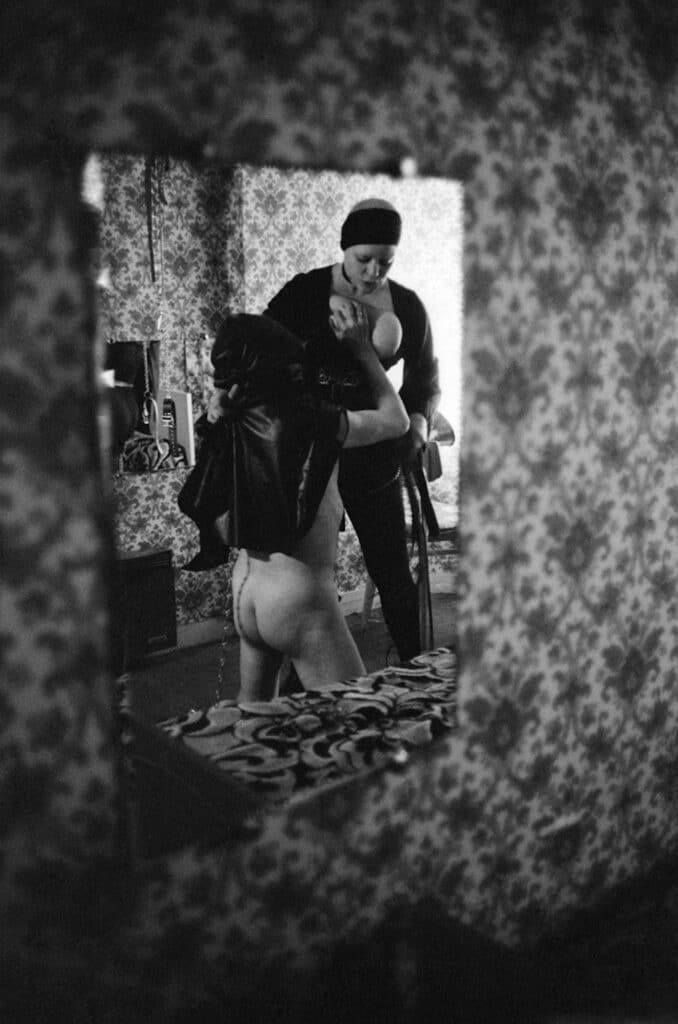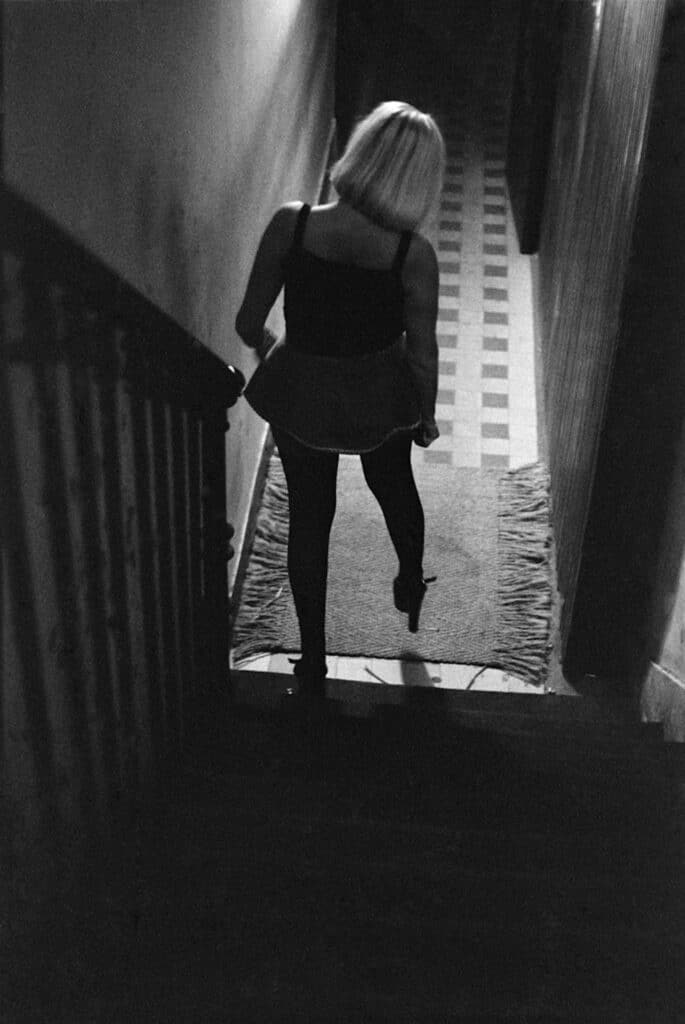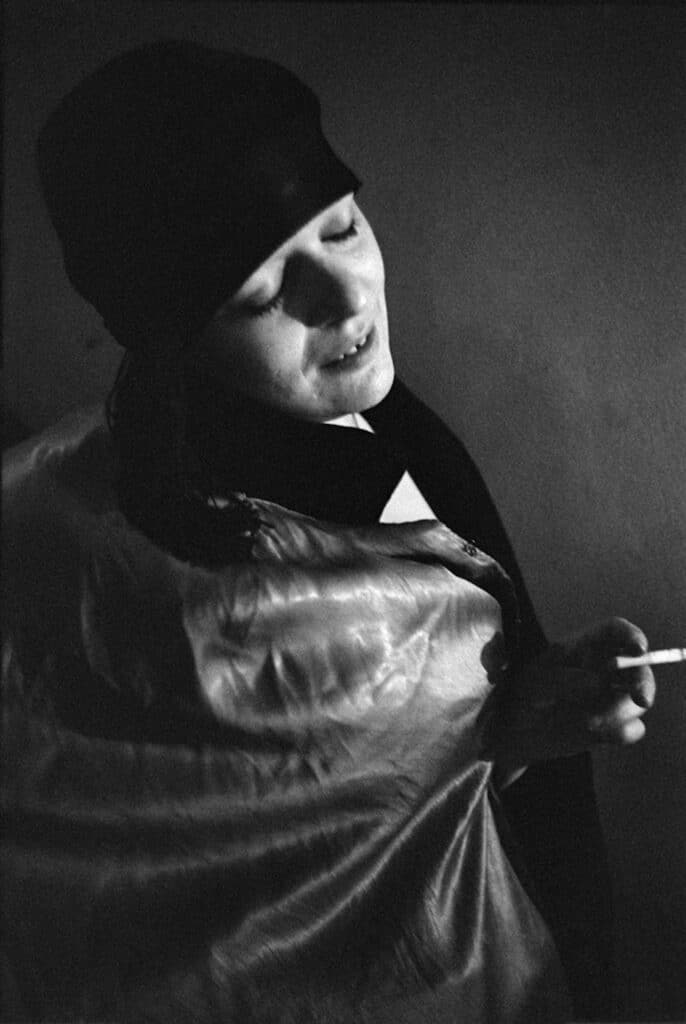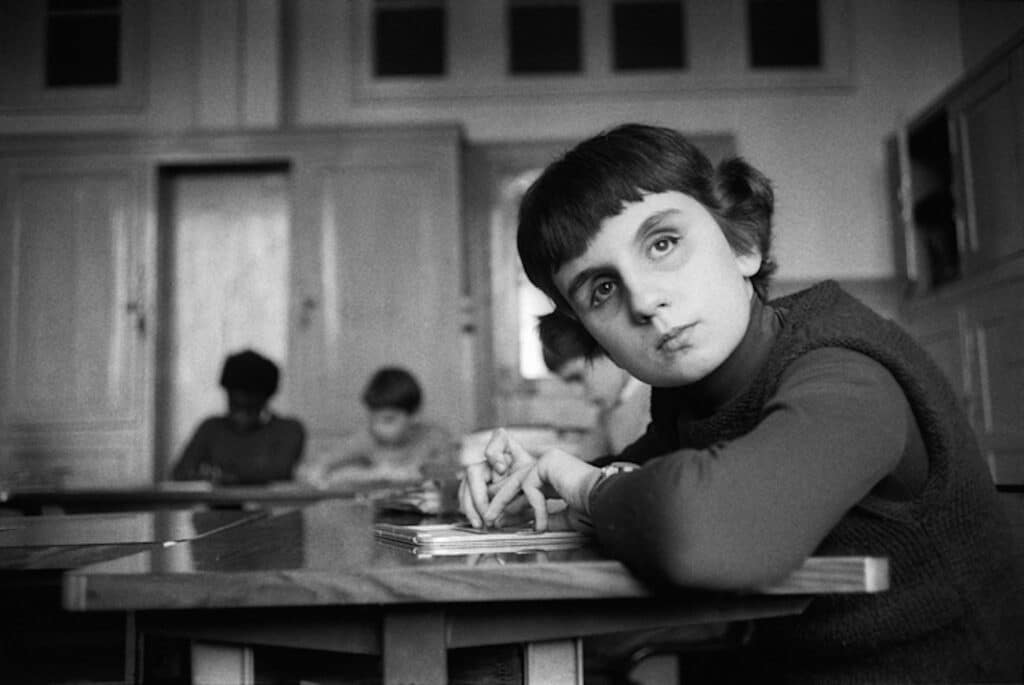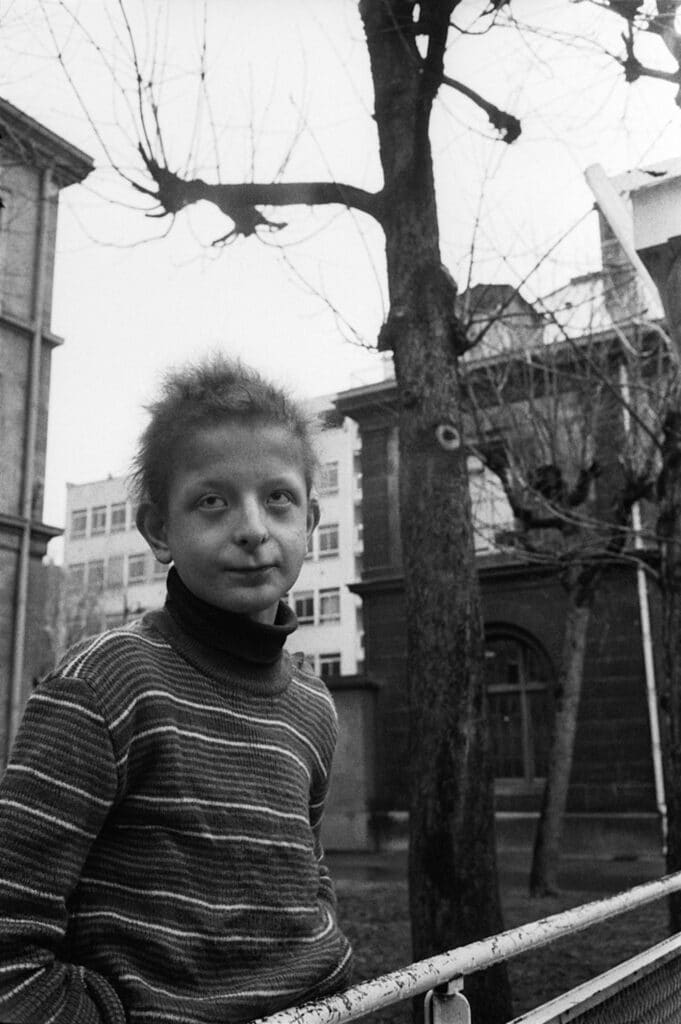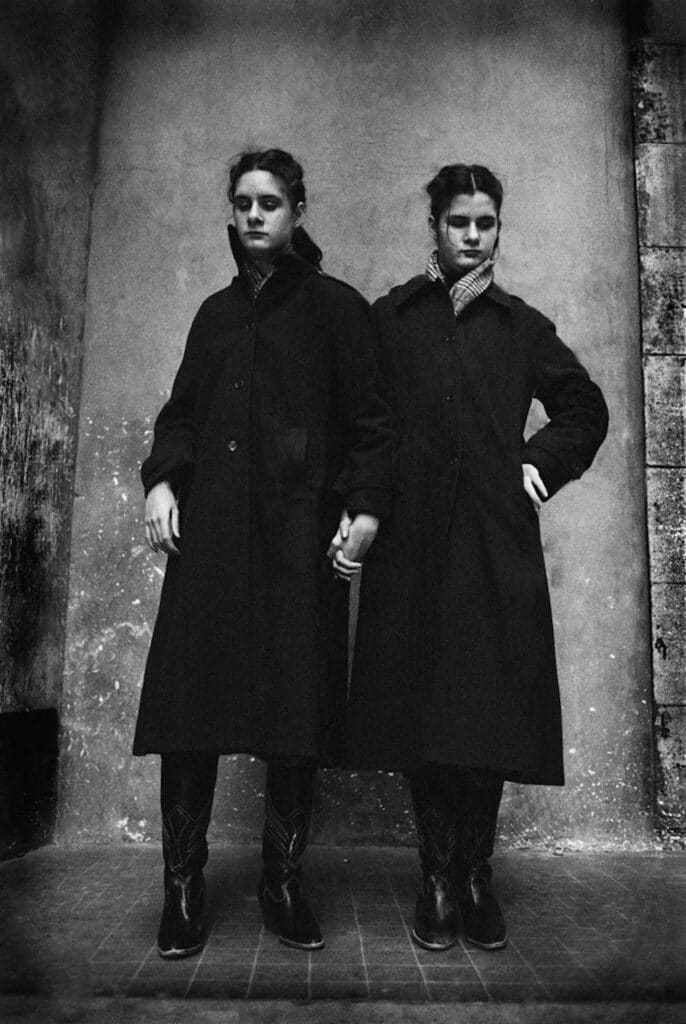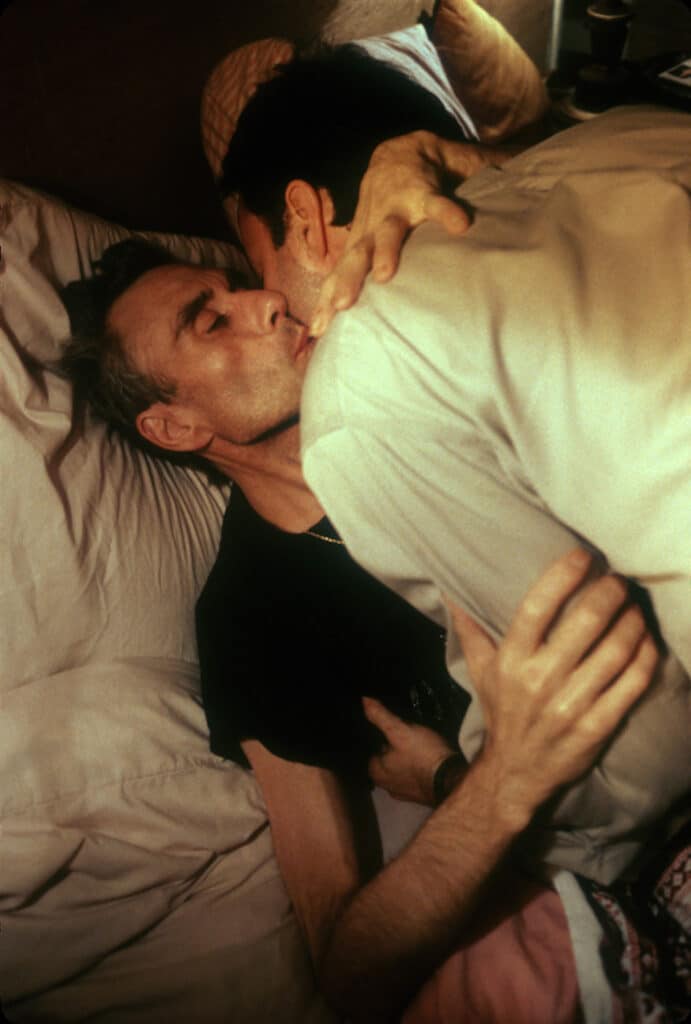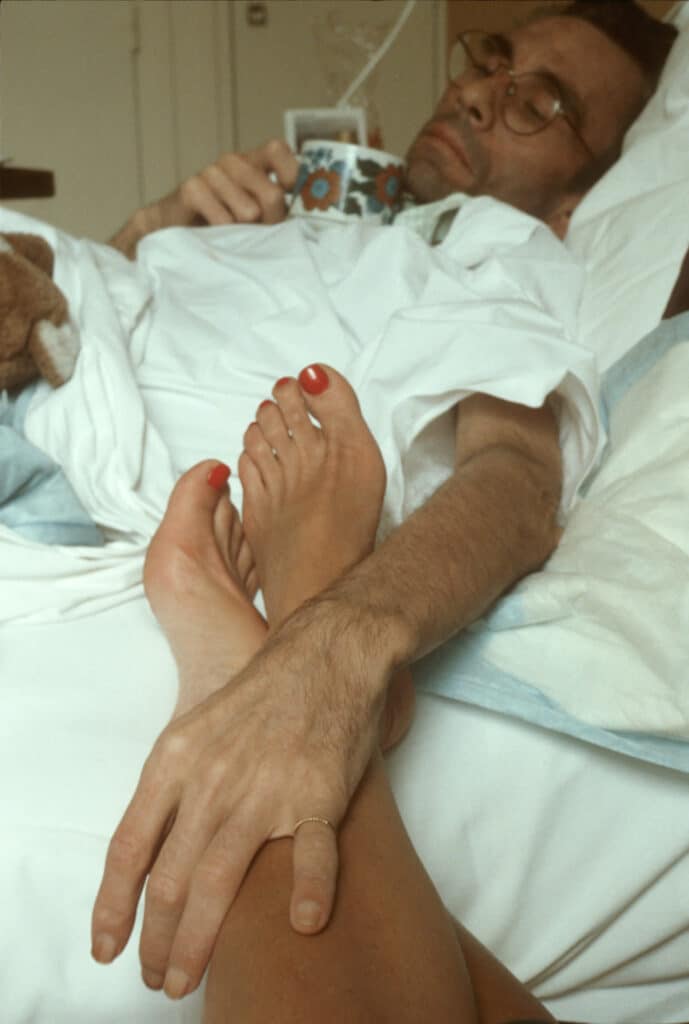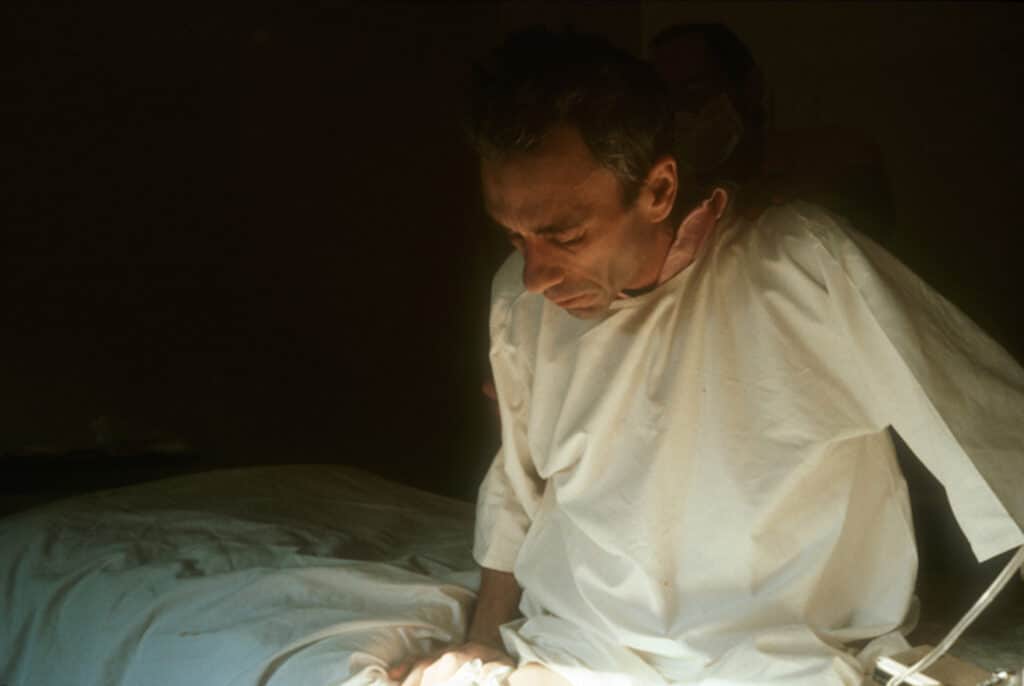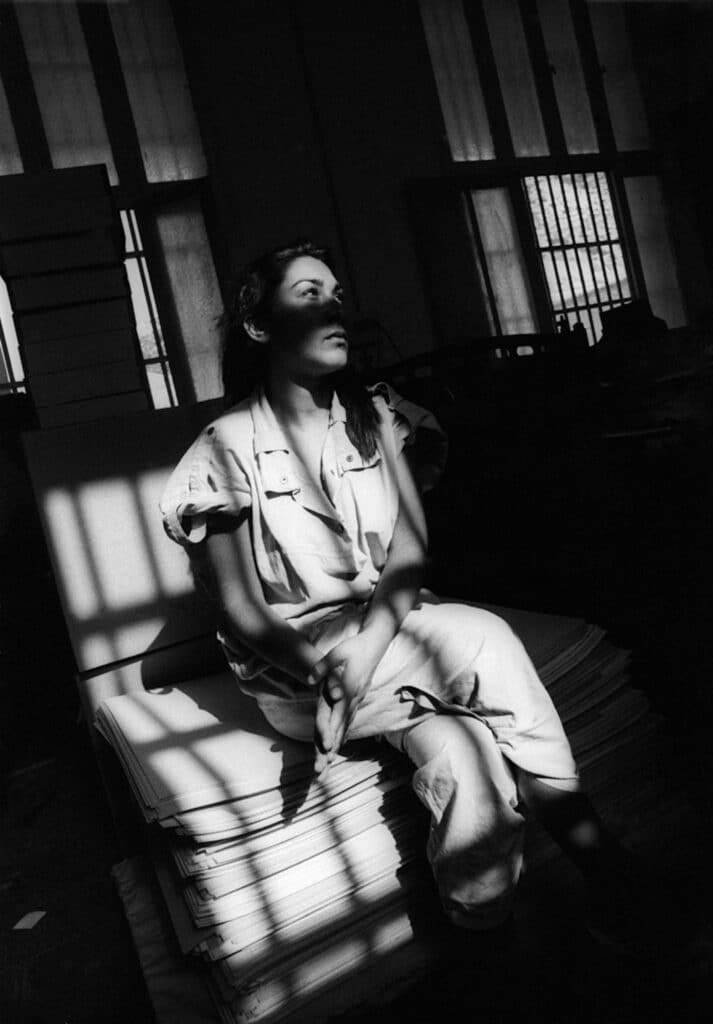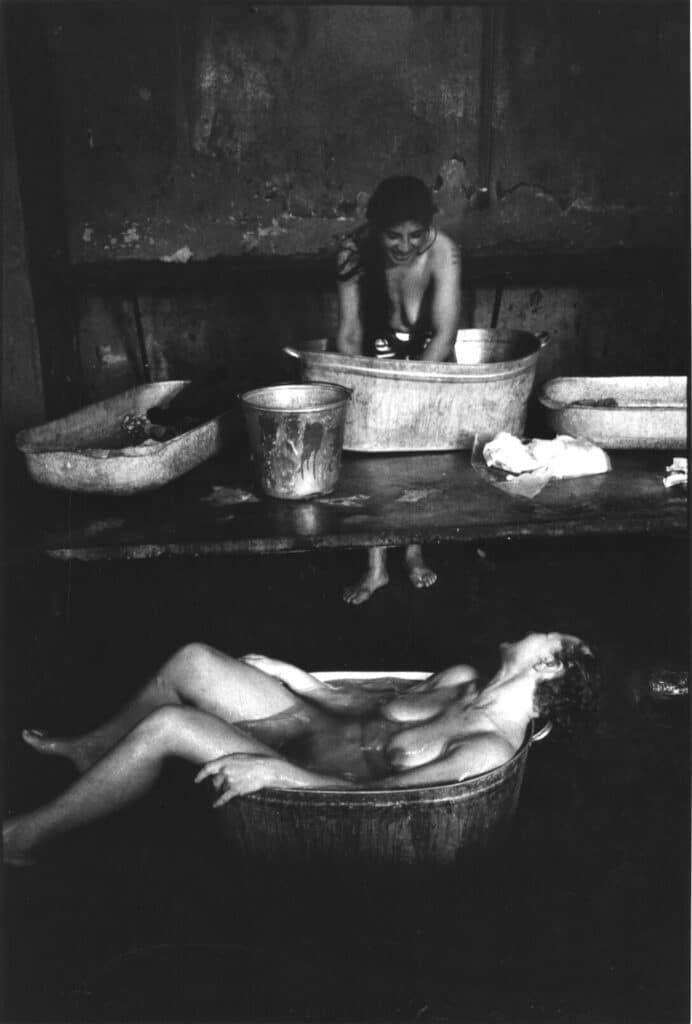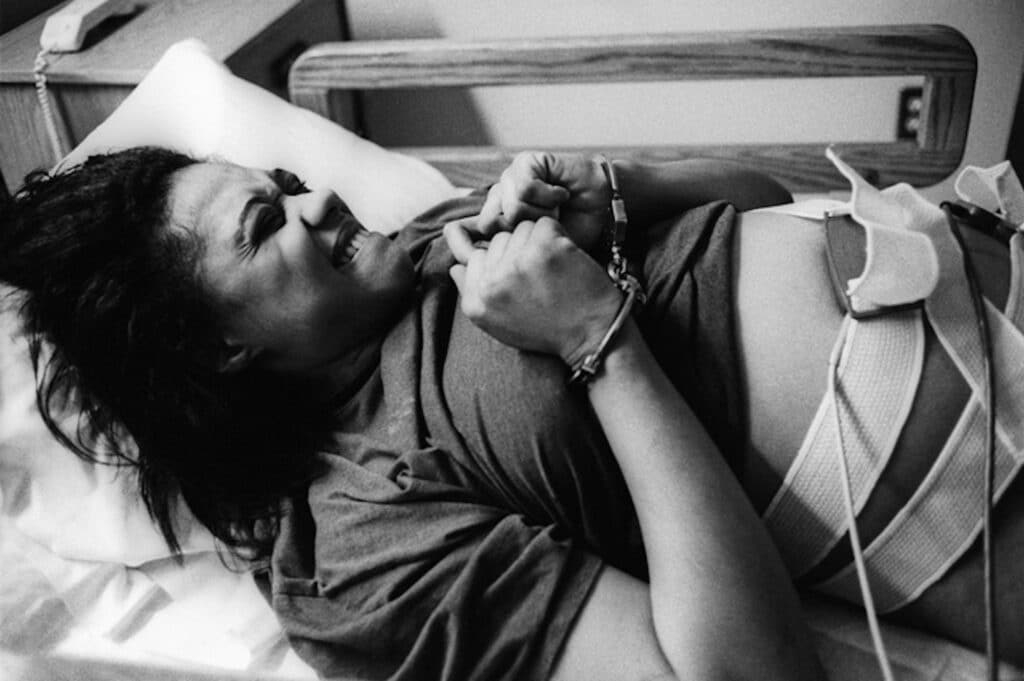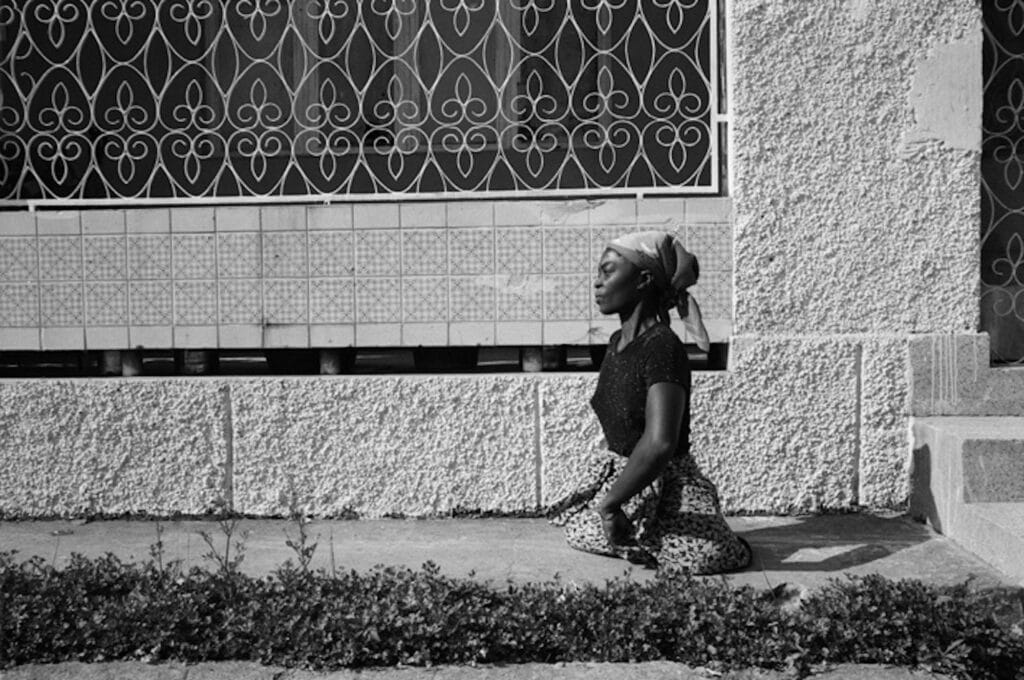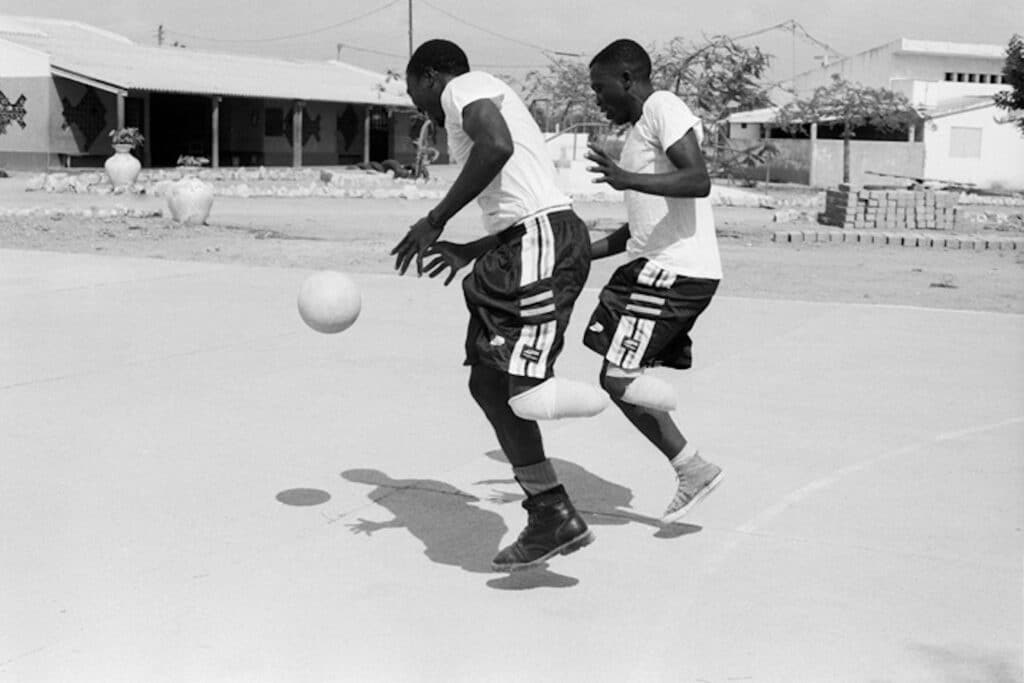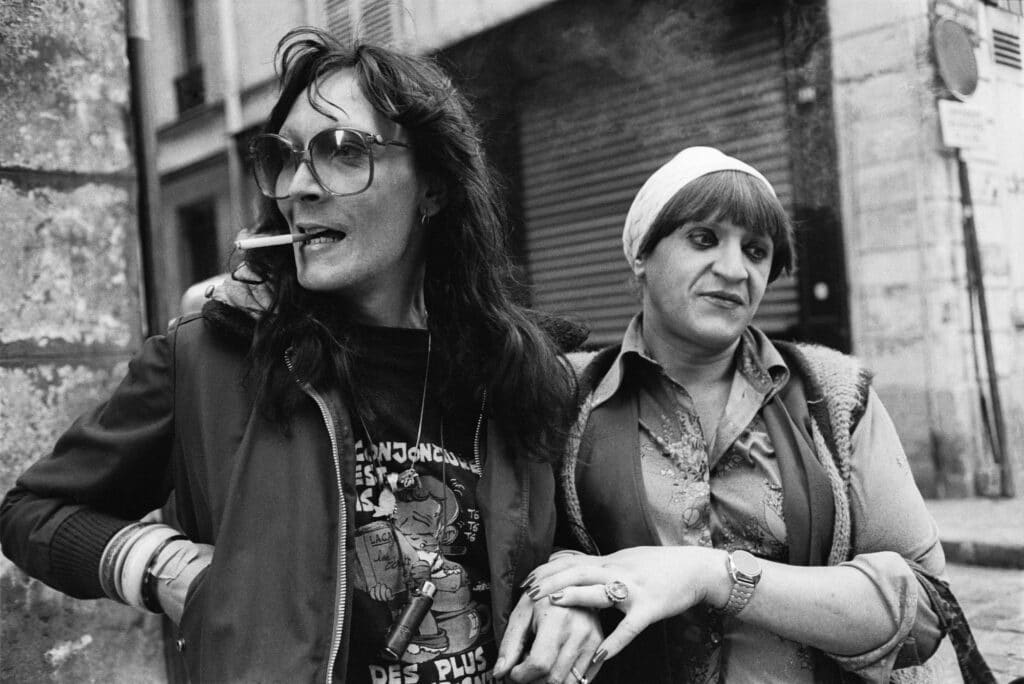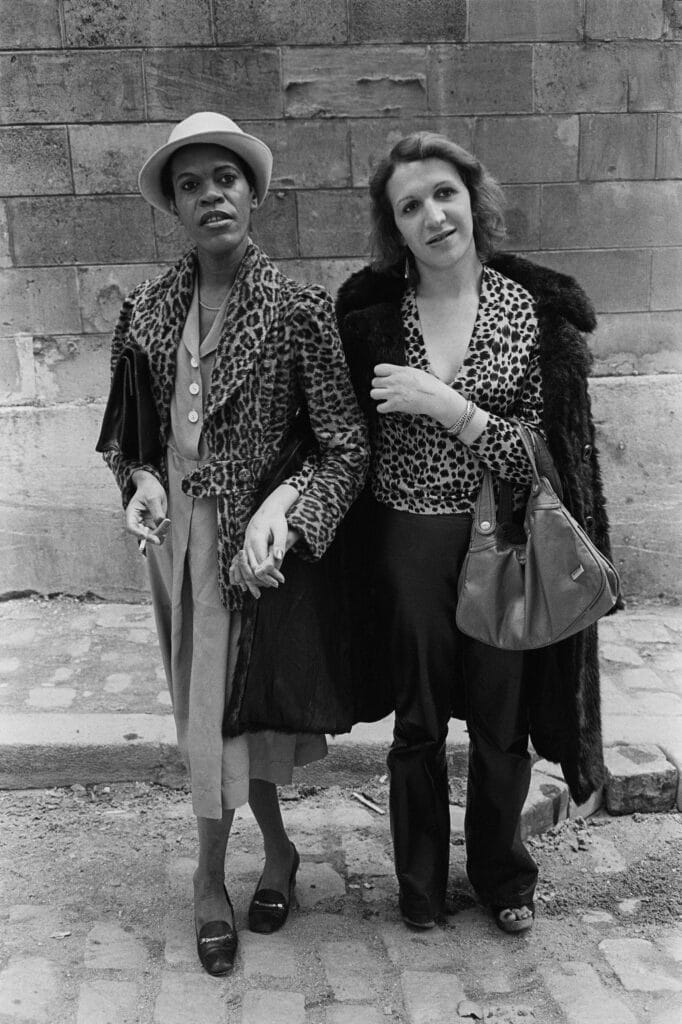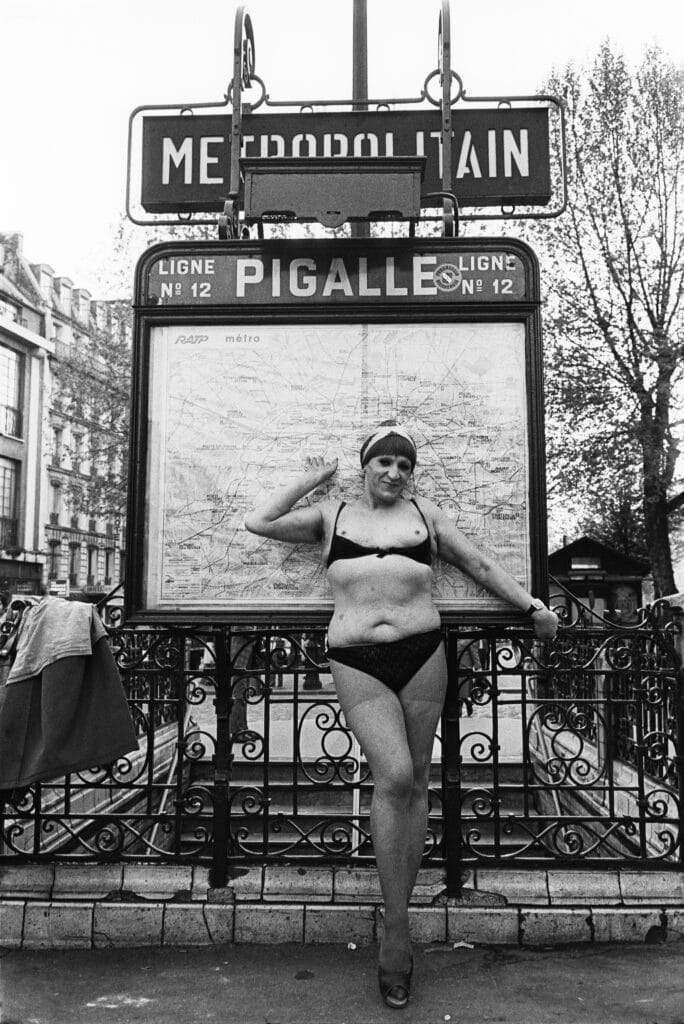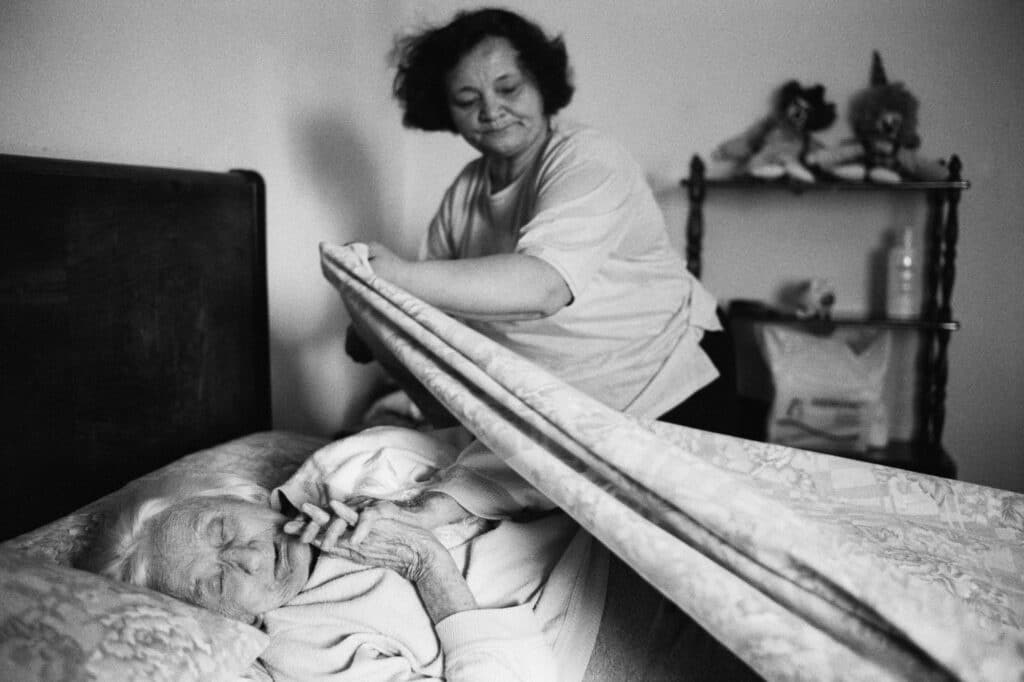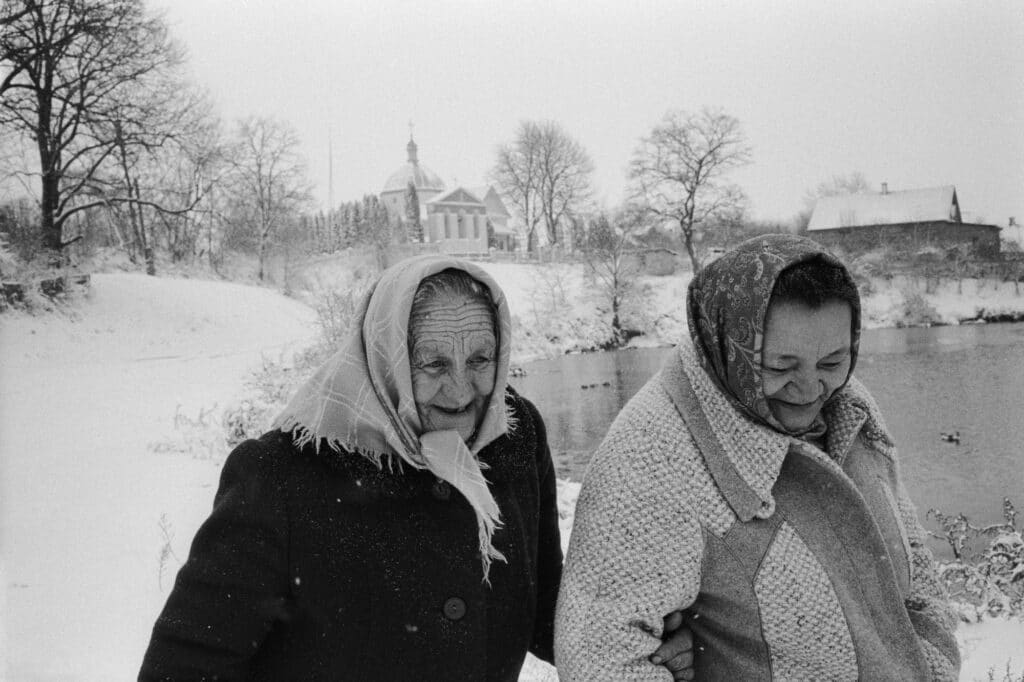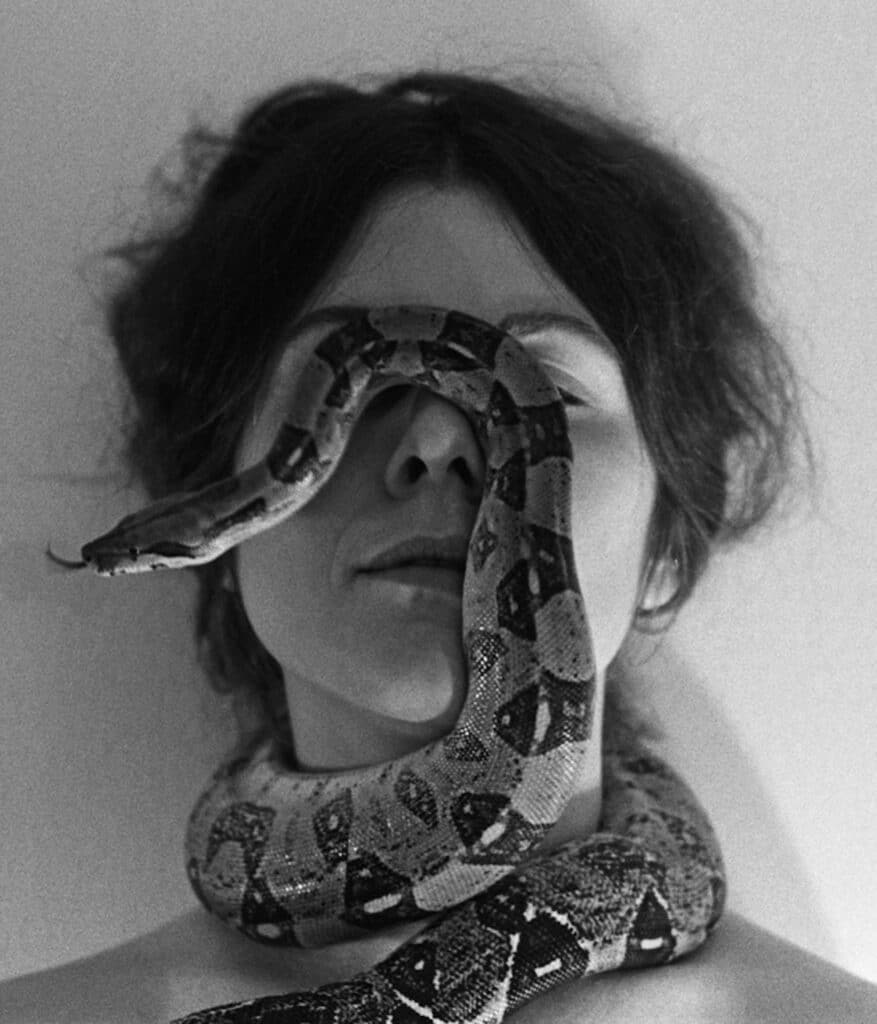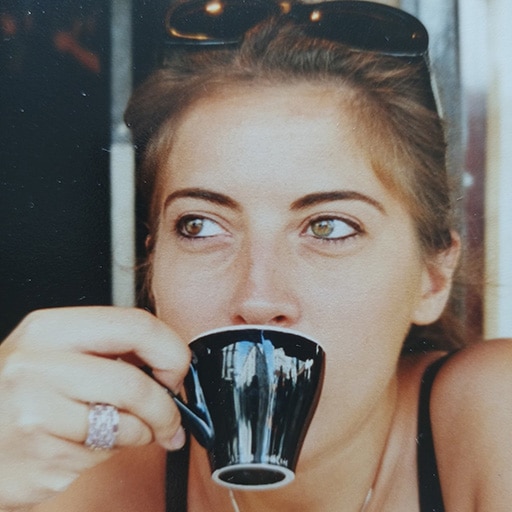Some encounters take us back to basic human values. An encounter with Jane Evelyn Atwood is among them. It was in her office-apartment in Paris that she discussed at length her fascination, or rather her obsession, with those marginalized, forgotten, and rejected by society. Nearly fifty years’ worth of contact sheets and negatives are scanned, numbered, and archived. Photographic books and exhibition catalogs fill the shelves. Here, a 1978 self-portrait hangs on a wall dedicated to a festival in Brittany. There, an album of classical, jazz, and ambient music. And in the adjacent building, her own lab, set up in a “chambre de bonne,” where, ever faithful to analog photography, the artist still makes limited prints. On the occasion of the retrospective Seven Stories (1976–2010) at the Château de Laréole in Haute-Garonne, France Jane Evelyn Atwood opened the door to these insular worlds scattered around the globe, inviting us to gauge the full scope of her work.
In the beginning: 19 rue des Lombards
Atwood has a serene face, attentive gaze, and a luminous smile. She radiates an inner beauty: just like the picture that welcomes you on her home page. Love, shot in Cape Cod, MA, where she grew up, offers a brief glimpse into the world to which she has dedicated her life. It’s a place where difference sits next to exclusion, marginality, and silence, and yet overflows with humanity, resistance, and endurance. As Atwood says outright: “I never wanted to be a photographer. It was Diane Arbus who gave me the desire to know people the way she photographed them.”
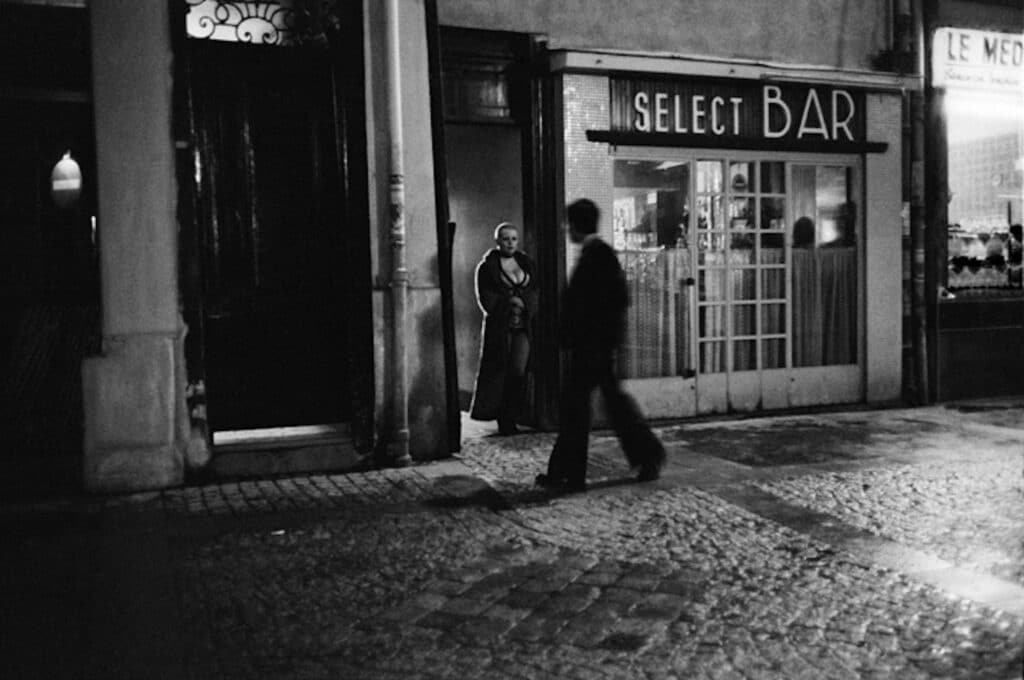
In love with Paris, this native New Yorker moved to the French capital in 1971. She became an au pair, then worked at the PTT (Poste, Télégraphes et Téléphones), which gave her the time to nourish her creativity. In late 1975, she bought her first camera. But meeting Blondine, a prostitute at 19 rue des Lombards, marked the true beginning: “I went there every night for a year,” Atwood explains. “After work I would go straight to the brothel, and sleep in the afternoon. I was so happy to be inside the building, it was where I wanted to be. Blondine was a dominatrix who practiced masochism on men, without intercourse. Thanks to her, I learned how to deal with the absence of light and how to use available light. But also about male/female relationships, money, its power, and the fact of having none.” This series on prostitution thus became Atwood’s first visual story, published later in a book by French editor Xavier Barral.
In 1975, she also immortalized the African-American writer James Baldwin. “It was a stroke of luck,” Atwood recalls. “He was coming to speak at the American University in Paris (AUP). A friend of mine was studying at the École des Beaux-Arts, asked Baldwin to pose for a sculpture, and invited me to come and photograph him. Baldwin was already an icon. After his death, he was forgotten, until his rebirth via the documentary I’m Not Your Negro (2017), directed by the Haitian Raoul Peck. From then on, all my photos were in demand.”
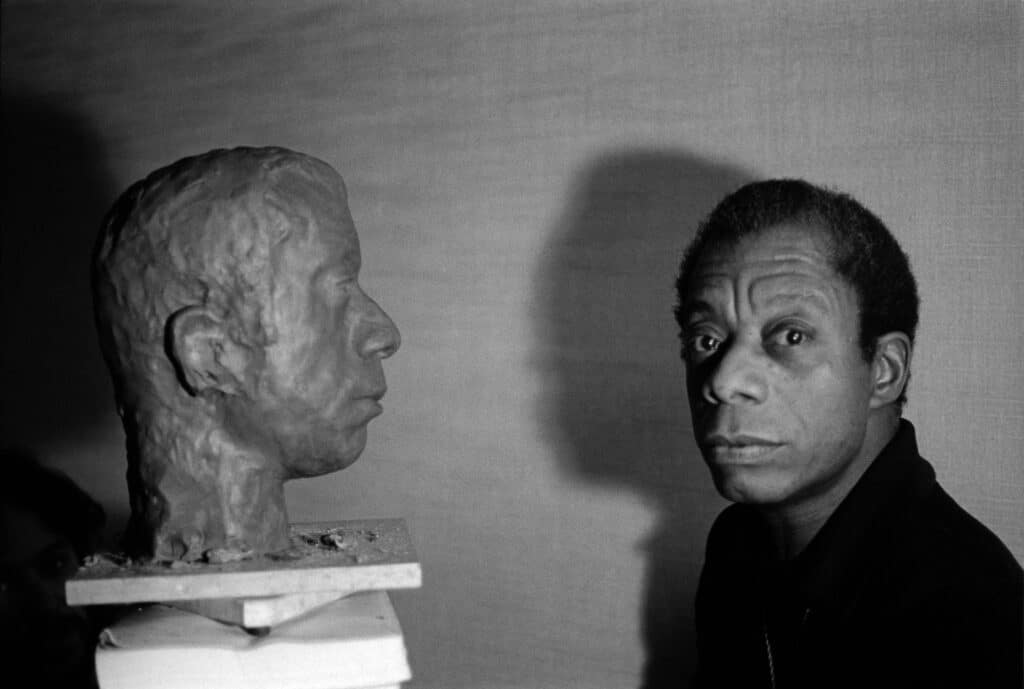
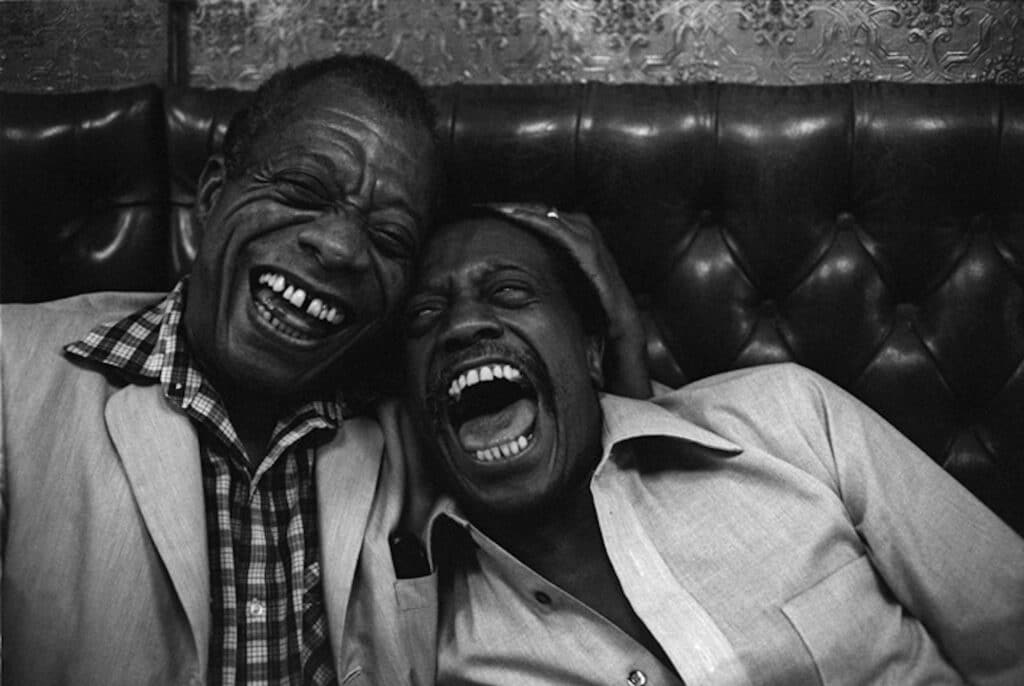
From curiosity to obsession
The photographer soon got to dig deeper into the fate of these outcasts that she is trying to include. When asked how she makes her choices, she gave a straightforward answer: “It’s the subjects who choose me. When something intrigues me, I want to tackle it right away, and I do what I can to get organized.” Atwood thus pries open those enclaves of the human condition where no one dares to venture and which many decide to ignore. “I am as marginal as the people I photograph,” she says with a smile. “It still annoys me to hear that things used to be easier in the old days, and that this couldn’t be done today, but that’s not true. The thing is, everyone thinks they’re a photographer with just a phone, but the eye of the person capturing the moment is still essential.”
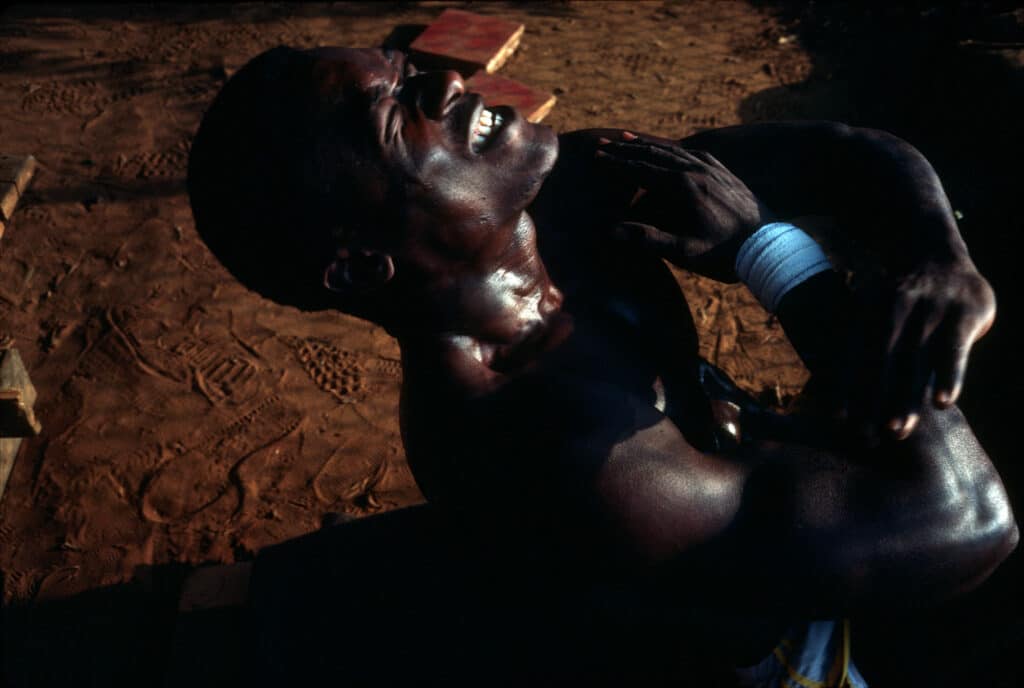
In 1980, Atwood was the first recipient of the W. Eugene Smith Grant for her series on blind children. Three years later, she embarked on a long-term project with the Foreign Legion, following soldiers in Beirut. “I was intrigued because I had thought the Legion no longer existed,” says the photographer. “They always had bad press, and since we didn’t know much about them, it fed all sorts of fantasies and judgments. At the time, the Legion went to two places: Chad, which was exploding, and Beirut, which was much calmer. I followed the latter group which belonged to the UN peacekeeping corps. But when they arrived, the city was being bombed. I was stuck with them for six weeks. And I got my first scoop. Paris Match paid me enough money that I covered it in color for eighteen months. I came out with a book, designed as a family album.”
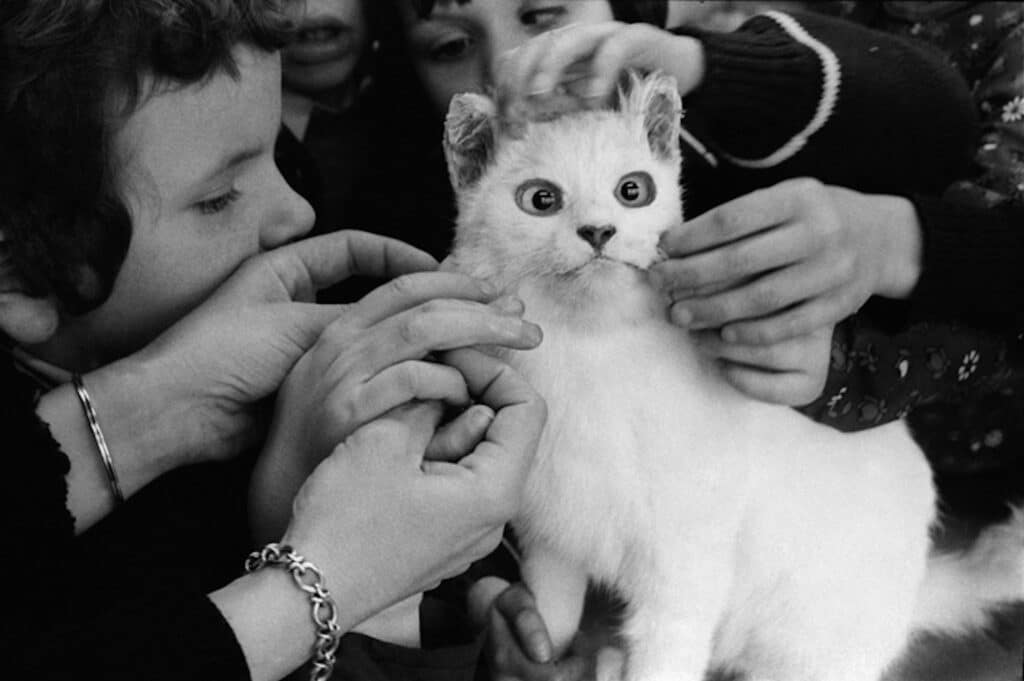
From immersion to work on time
In 1987, when AIDS was killing millions of people around the world, the virus still had no face. Atwood decided to accompany Jean-Louis during the four months preceding his death. He was the first patient in Europe to agree to be photographed for the press. “It was my first militant subject,” she points out. “I wanted to change attitudes. People were talking about the epidemic, but nobody had seen anyone infected. AIDS patients were like ghosts, and I wanted to show that they were human beings. Unlike COVID, where the World Health Organization (WHO) took two weeks to react, it took more than three years before they started paying attention, despite the high death toll.” For the photographer, the choice of color was not insignificant: “I wanted [these images] to be published everywhere. Paris Match was the first. The funny thing is that the magazine published them in black and white.”
Two years later, Atwood began a decade-long project on incarcerated women. She patiently gained access to forty female prisons, including those on death row, in nine countries in Western and Eastern Europe and in the United States. The project, which gave rise to a book publication, is a valuable resource on the conditions of women’s prisons. “They will do anything to keep you out if you’re a journalist,” notes the photographer. “When you do get an answer, you have to pick up and go. I understood how prisons work after having covered two or three, because the system remains the same. I had three cameras, my notebooks, my pens, my markers, and my image rights authorizations. I never forced anyone to sign. Some of the women I photographed have since got out, and it is essential to explain to them the importance of the images. I don’t want to stand in the way of their new life.”
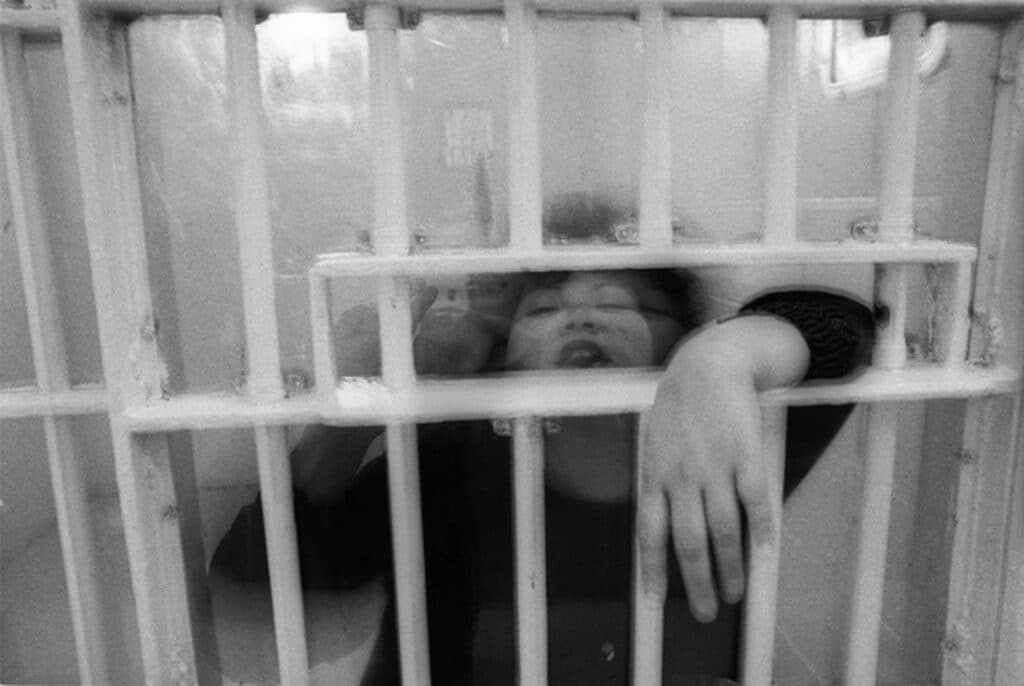
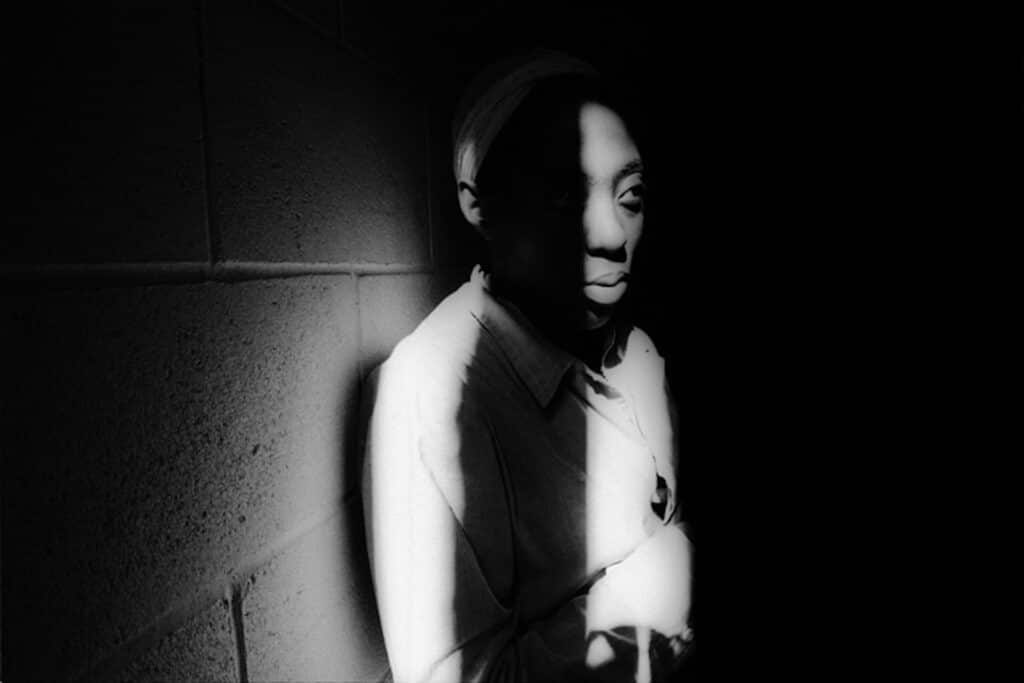
Atwood’s shot of a prisoner giving birth in handcuffs in Alaska sparked change. “Since 1997, [the practice] has been prohibited in thirty-six states in America and in England,” she notes. “At the time, Amnesty International launched a campaign against the shackling of pregnant women. I was the only one to reveal this context and the NGO had three years to stop this practice. It’s the eternal problem: this world applies men’s rules to women, but we are different.”
At the edges of intimacy
Her work process does not end with taking the shot, and she always sets boundaries so as not to violate human dignity. “In action, you can’t censor yourself, you have to take every possible shot. It’s only later, in contact sheets, that choices are made. And the choices are always mine, not the agencies’.” Asked, “What kind of photo captures one’s imagination and go down in history?,” Atwood immediately replies: “The photo that moves you.” She then adds, “a photo that’s not immediately understood is also often a very good photo. I am obsessed with composition, and I get rid of whatever is not [well composed]. Everything happens in the moment; I don’t crop anything. What I have seen is what you will see.”
At the turn of the century, she continued to seek out trouble, and flew to Cambodia to document landmine victims. “It was a commission from Handicap International. The country was supposedly ‘clean.’ My photos showed the opposite. It is impossible to clean up a country. If it’s mined, it’s ruined. Except for the tourist spots, the territory is still infested with explosive devices.” This job morphed into a four-year-long personal project, with the artist widening the field to include Angola, Mozambique, Kosovo, and Afghanistan.
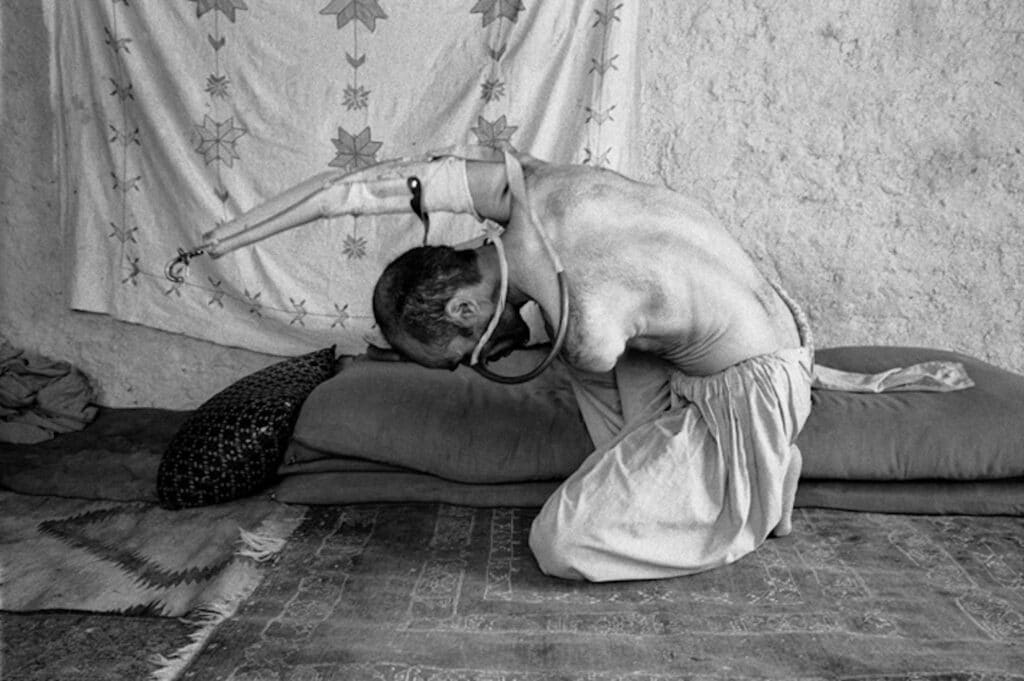
The following years, she got an assignment from Action Against Hunger and left for Haiti, where she again broke with her usual modus operandi and produced a full-color series on daily life: “It’s always a feeling. I prefer black and white, probably because we see almost everything in color. For me, it’s the essence of photography. But the subject matter dictated this choice.”
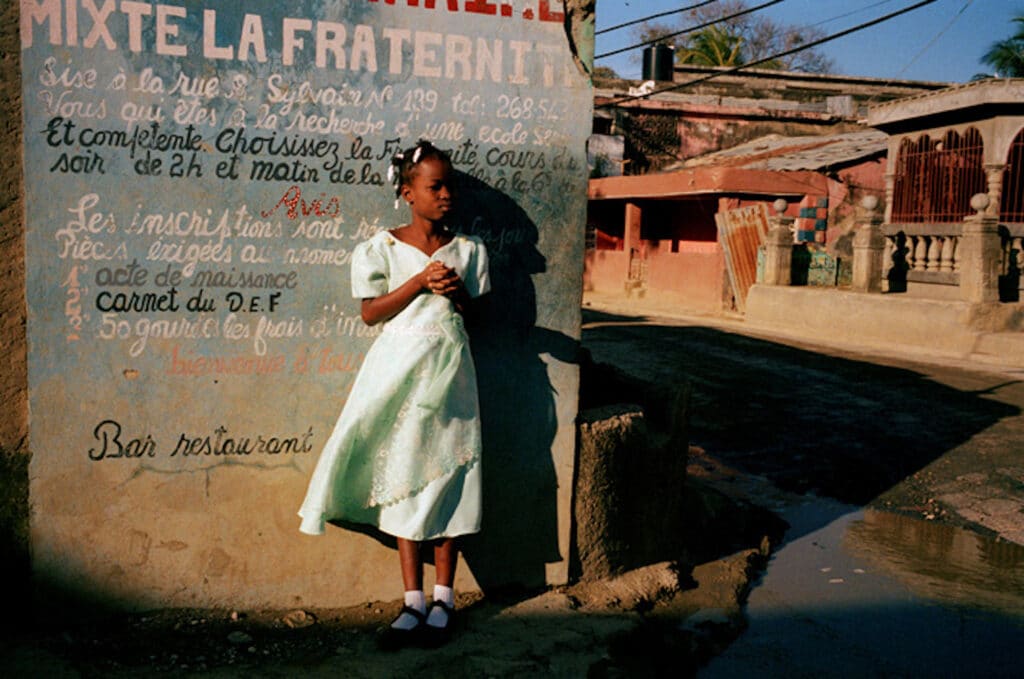
Testimony of a lifetime
Throughout 2022, Jane Evelyn Atwood has kept a busy schedule. She had her first solo exhibition with Chanel in Tokyo. She has received a grant for a major commission from the Bibliothèque nationale de France (BNF) and the French Ministry of Culture. Her retrospective at the Château de Laréole, in partnership with the MAP festival in Toulouse, has been enriched by the never-before-seen series Pigalle People, about transsexuals, shot in 1979 and published in book form in 2018. She is publishing also Darya, a book about the journey of a Ukrainian “badante,” or a live-in caregiver for the elderly. Atwood began this project in 2007 in connection with the phenomenon of female migration and abuse in Italy.
Through her choices, this multiple-award-winning photographer has never ceased to break down taboos and has been drawn to stories of incarceration, borders, and margins. She has always been committed to bearing witness, to militating or changing preconceived ideas about people whose struggles still need our support. She has tackled such causes as the US Supreme Court’s reversal of the historic Roe v. Wade decision on abortion. The Franco-American says she is now “pessimistic” because “the great global shifts tend to make us forget true humanity.”
While #MeToo remains a positive action, these upheavals have shown her that new battles remain to be fought. “A lot of things need to be fixed after years of abuse,” she asserts. This great figure of photography, as sensitive to words as she is to images, with thirteen books to her credit, has stayed active: “Photography has given me everything: my life, encounters, these worlds. All this humanity has helped me find balance; I feel very privileged. When you meet people in real distress, everything becomes relative. I was able to see the vastness of this planet in all its contradictions.”
Sept histoires (1976–2010) until September 25, 2022, Château de Laréole, 31480 Laréole, France.
Darya: Histoire d’une badante ukrainienne, Éditions Le Bec en l’Air, photographs and texts by Jane Evelyne Atwood, 228 pages, 38$.

